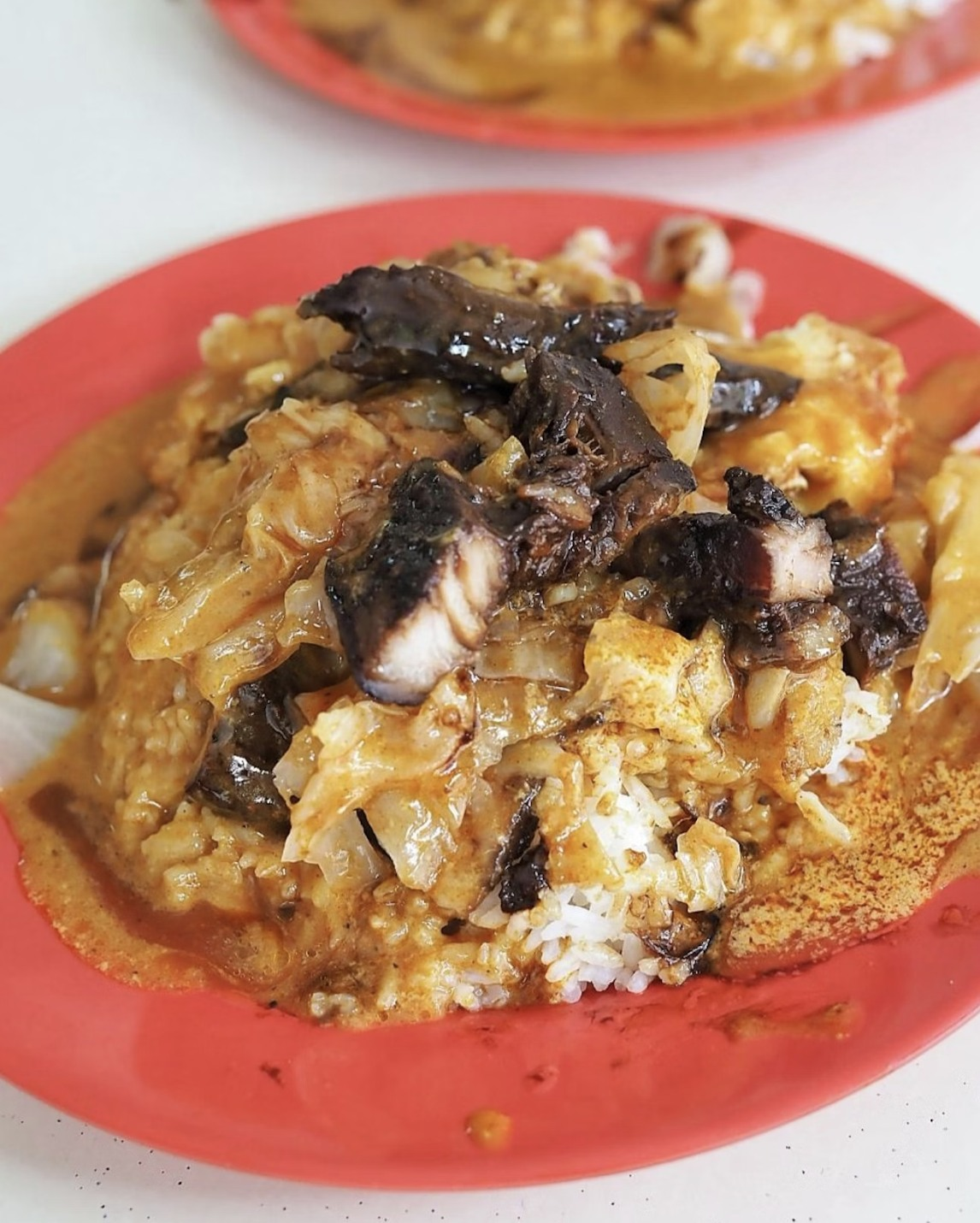Scissors Curry Rice #FoodForThought

For the uninitiated, it may be difficult to make out what this gooey—even ugly—dish entails, but the scissors curry rice can “curry favour” fans to go long distances to dine at their favourite outlets.
The dish comprise of steamed rice, fried pork chops, braised pork, braised vegetables, and of course, curry. Patrons can also choose to add other items to the dish – for example, braised tau pok, long beans, prawn rolls, and egg. These are piled on top of white rice, then blanketed with a generous serving of aromatic curry gravy.
A glorious mess indeed.
What’s memorable about the dish is also the fact that the pieces are cut into bite sized chunks using scissors – but just how did this practice come about? Well, some vendors say they found that cutting food with a pair of scissors is a unique selling point of the dish. Some say the snipping sound of the scissors attracts customers, drawing them back for more. Another vendor, a fourth generation stall owner, said that his great grandfather had opted to use scissors instead of knives or cleavers due to frequent gang fights in the 1930s!
Scissors curry rice is believed to have originated from Hainanese chefs and cooks who had come to Singaproe for work. Often in the employ of wealthy Peranakans and British families, these chefs gradually adopted elements of their employers’ signature foods into an eclectic mess of a dish – specifically, the fried pork chop from the British, and braised vegetables (chap chye) and curry chicken from the Peranakans, whose food was influenced by the flavours of Malayan, Indian and Chinese cuisine.
Over the decades, these chefs branched out to form their own eateries, and many passed on their own recipes through the generations. The dish, perhaps, is a microcosm of our Singapore – a mix of different cultures and practices, rooted in tradition, and also marked by innovation and adaptability that ultimately creates a uniquely Singaporean experience.
#FoodforThought #scissorscurryrice #Singapore #hawkerculture

